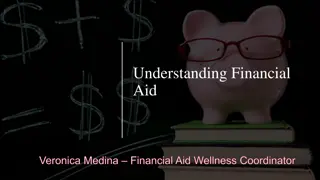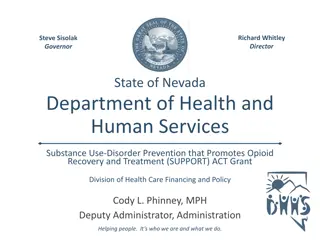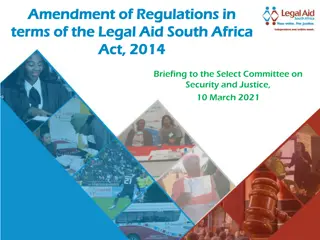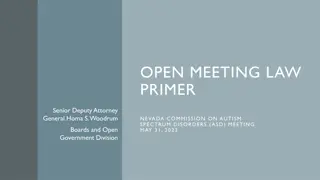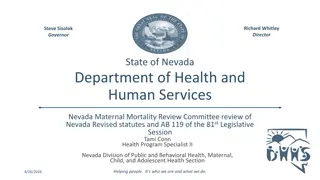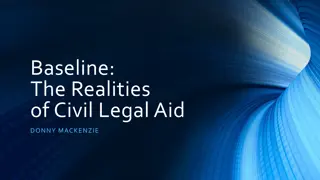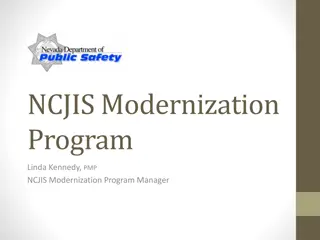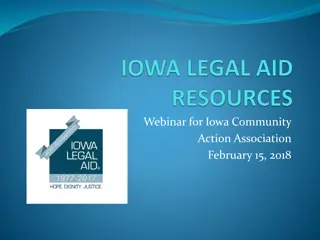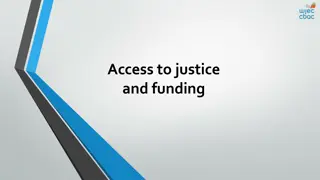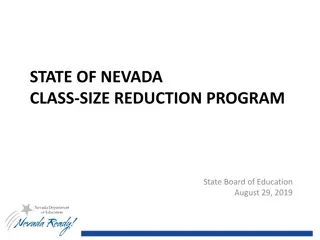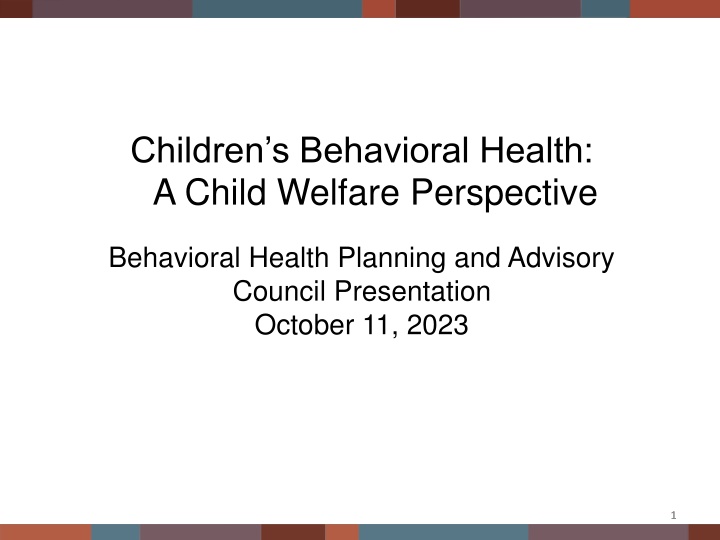
Child Welfare and Behavioral Health Services for Children
This presentation explores the intersection of child welfare and children's behavioral health, highlighting the framework of child welfare services, significant mental health needs in Clark County, and the continuum of mental and behavioral health services for children. It covers the process of child welfare agency involvement, different placement options, and the importance of providing a variety of services to support children and families.
Download Presentation

Please find below an Image/Link to download the presentation.
The content on the website is provided AS IS for your information and personal use only. It may not be sold, licensed, or shared on other websites without obtaining consent from the author. If you encounter any issues during the download, it is possible that the publisher has removed the file from their server.
You are allowed to download the files provided on this website for personal or commercial use, subject to the condition that they are used lawfully. All files are the property of their respective owners.
The content on the website is provided AS IS for your information and personal use only. It may not be sold, licensed, or shared on other websites without obtaining consent from the author.
E N D
Presentation Transcript
Childrens Behavioral Health: A Child Welfare Perspective Behavioral Health Planning and Advisory Council Presentation October 11, 2023 1 1
Overview of Child Welfare The Framework Children and families come to the attention of the child welfare agency due to reports of abuse or neglect. Often these families face issues such as illness, alcohol or drug addiction, and/or homelessness, domestic violence, or other issues Based on the information in the report, a child protective services investigation may be initiated. The outcome is either a substantiated or unsubstantiated report. If the report is substantiated, the agency opens the case for services, which can be in or out of home In home cases involve the agency working with the family to put a safety plan in place so that children can safely remain in the home while the parents work on the issues that brought them to the attention of the agency. Out of home services involve children being placed in foster care, while the parents work on case plan to address the issues that make it unsafe for the child to remain at home. Foster care placements may be relatives, or they may be people unrelated to the child or family. Foster care is intended to be a short-term temporary situation until a permanent placement can be made: Reunification with biological parent(s). Adoption Guardianship OPPLA (Other Planned Permanent Living Arrangement) 2
A Snapshot of Child Welfare & Childrens Mental Health Child Welfare May 31, 2023 Signficant Mental Health Needs July 1, 2022 to June 23, 2023 Kids in Clark County DFS Custody: 3255 Cases where a parent(s) surrendered a child to system due to inability to meet the youth s mental health needs: 62 By Age: 5 & Under: 1477 6-12: 996 13-17: 550 18 & Up: 232 Acute Hospital Admissions: 229 Unlocked PRTF Admissions: 16 By Placement: Child Haven: 98 (3%) Relative/FK: 1572 (48.3%) DFS FC: 499 (14.3%) Specialized FC: 362 (11.2%) Parents: 276 (8.5%) Hospital/RTC: 58 (1.2%) Detention: 17 (0.5%) Runaway: 29 (0.9%) RTC Admissions: 27 Youth in Care Receiving Mental Health Services Therapy through 2 largest providers: 507 In a treatment home: 374 In RTC, PRTF, Acute Hospital: 24 3
Childrens Mental and Behavioral Health Services Continuum PRIORITY Prevention/Early Intervention Intensive In-Home Services Community Based Residential Locked Residential Treatment Outpatient IOP/PHP Description Regular therapy visits to a clinic or may be provided in the home. Description A variety of services designed to wrap a family in support and help keep children in their homes. Can include Emergency and Planned Respite, Peer Support, Intensive In-Home Services, Crisis Stabilization, and Care Coordination. Description Intensive Outpatient and Partial Hospitalization offer more structure/ support than outpatient.t IOP- 3-4 days/week PHP- 6 or more hours/day, up to 7 days/week. Description Programs that provide a therapeutic environment in an unlocked residential community setting. Ex: Qualified Residential Treatment Programs (QRTPs) and unlocked Psychiatric Residential Treatment Facilities (PRTFs). Description 3 levels: Sub acute, Acute, PRTF-locked- hospitals provide mental health and medical care to patients with variety of high acuity/chronic mental behavioral health. Description Stopping mental health problems before they start, supporting children at higher risk, helping children with mental health problems stay well to avoid progressing through the continuum of need by ensuring prompt engagement, assessment and delivery of service. Considerations Lack of both funding mechanisms and clear definition of provider type, as well as high need for the pediatric population and neurodevelopmental (FASD) Considerations Need to ensure referral for services as early as possible and payment structure is available. Coordination with other services is critical and not funded Considerations Very limited in this area due to lack of sustainable funding and programming Considerations Need sustainable funding to support current programs and programs for certain populations (i.e., pediatric, co-occurring neuro-developmental, etc.) Considerations No QRTP s (yet) in Nevada and funding mechanism remains undefined. Considerations Subacute not funded/doesn t exist, need facilities who can appropriately manage aggressive behavior and program for IDD Need clearer definitions, flexibility and ability to scale services up/down according to need particularly in higher acuity, complex cases Extremely limited unlocked PRTF capacity. Need increased capacity to deliver services in home Waitlists and transportation barriers Crucial gap for dual/delinquency involved youth and neurodevelopmental population. Need mechanisms to better identify children who require assessment and intervention earlier. Focus on the 0-6 age range both in child welfare and community. These are crucial step up/down services to keep children in least restrictive setting. Need increased capacity/support for therapists that are culturally affirming to serve Nevada s diverse population. Ability/reimbursement to coordinate with outpatient providers and/or overlapping services (i.e., placement in HLOC home, etc.) Care Management Entity program intended to assist in this area, and ideally will provide services, coordinate, assure prompt implementation, and address provider capacity/gaps Recent wins: Pediatric RTC DWTC; Desert Parkway SNU extended acute. Availability of these services decreases out-of-state RTC placement and assures children who are placed out of state return more quickly and successfully. Funding to address prompt referral and care coordination. Need more in state options, especially for special populations high needs youth, youth with aggression, youth with co- occurring neuro-developmental. Data Focus Capacity versus current/projected needs? Data Focus Capacity versus current/projected needs? Data Focus Capacity versus current/projected needs? Data Focus Capacity versus current/projected needs? Data Focus Capacity versus current/projected needs? Data Focus Capacity versus current/projected needs? Acute hospitalization services at any point in the continuum Mobile crisis assessment and services at any point prior to residential 4 NEURODEVELOPMENTAL CONTINUUM OF CARE?
Gaps in Continuum of Care Data from Governmental and Private Facilities for Children, Inspections Report, December 2022 (Fiscal Year Ending June 30, 2022) Gaps exist at all levels of care: Prevention/Early Intervention -- Current gap, but RFP for Care Management Entity (CME) should help. Concerns re: funding sustainability. Outpatient Services -- Smallest gap. CME should assist with prompt referral & care coordination. Intensive In-Home Services -- Largely unmet need. CME to address, but concerns re: volume & funding sustainability. IOP/PHP -- Programs being added, but volume, sufficiency of rate, and transport remain a concern. Community-Based Residential -- Critical unmet need. Lack of step-downs negates RTC progress. o No official QRTPs yet. o Limited PRTFs o Aurora Healing Center (newly opened) o NGU (closed) Ages 8-17; Max Capacity 144; Ave. Pop. 87. o PRTF Enterprise (currently combined w/North & pending new management) Ages 6-17; Max Capacity 18; Ave. Pop. 5 o PRTF North Ages 12-17; Max capacity 16; Ave. Pop. 8 o PRTF Oasis (currently transitioning to new management) Ages 6-17; Max Capacity 12; Ave. Pop. 5 o Rite of passage/Sierra Sage Age 14-17; Max Capacity 48; Ave Pop. 30 Locked RTC -- Partially met need. Lack of specialized programming remains a concern. o In State: o Desert Willow Treatment Center (acute hospitalization and RTC data not separated in report) o Desert Winds Ages 12-17, Max capacity 48; Ave Pop 28 o Reno Behavioral Health Hospital Ages 12-17, Max Capacity 21; Ave. Pop. 15 o Willow Springs (acute hospitalization and RTC data not separated in report) o Out of State: In March 2021, 305 kids in RTC, 130 (48%) out of State (Per DOJ Report.) 5
Consequences of Gaps in Continuum of Care Increase in the number of youth and length of stays in Child Haven Of the 98 kids on average placed at Child Haven during May 2023, approximately 37 needed a specialized foster home or higher level of care due to behavioral health needs. In SFY 2021, 18% of youth with a mental health diagnosis remained at Child Haven between 15 and 30 days, where as only 8% of youth without such a diagnosis stayed that long. Additionally 58% of the children placed at Child Haven who have a mental health diagnosis disrupted from other placements, returning to Child Haven as a last resort more than once. In SFY 2021 for youth at Child Haven for more than 30 days with the Top 4 Common Mental Health Diagnoses, the reason for discharge for 22% was running away. Increase in the number of youth inappropriately in detention and/or ERs In 2020, 4280 children were treated in ERs in NV for behavioral health conditions. A Southern NV hospital reported a 65% increase in pediatric ER admissions for behavioral health emergencies between 2019 and 2021. Youth being placed in unnecessarily overly restrictive settings More youth being sent out of state for treatment In March 2021, 130 NV children were placed out of state (43% of all residential placements). DOJ finding: Nevada is in violation of Title II of the Americans with Disabilities Act by failing to provide services to children with behavioral health disabilities in the most integrated settings appropriate to their needs. Increased cost to youth and the system 6
Recommendation: Development of QRTPs A Qualified Residential Treatment Program (QRTP) is a newly defined level of care for foster youth pursuant to the Family First Prevention Services Act (FFPSA) of 2018. A QRTP is one of the four federally reimbursable non-foster family placement settings under Title IV-E for a child who is removed from their family. For a childcare institution to be certified as a QRTP, it must: Utilize a trauma informed model Have nursing and clinical staff available 24 hours a day Obtain accreditation Offer aftercare services Offer family engagement Currently there are no official QRTPs in Nevada Plan for development? Plan for funding? 7
Recommendation: Expansion of Nevadas Unlocked PRTFs Note: In child welfare, RTC is typically used to refer to locked residential treatment facilities and PRTF is generally used to refer to an unlocked residential treatment facility. In the broader behavioral health community, PRTF is often used for both. In NV, our unlocked PRTFs have mostly been run by the State and have had their share of struggles. Currently, we only have 6 unlocked PRTF beds in Southern Nevada (and those are undergoing a management transition). Current estimated average need by DFS youth: Approx 20. This is an important, less-restrictive alternative to a locked RTC placement. This is also a crucial missing step in discharge plans for youth successfully stepping down from RTC. 8
Gwynneth Smith Chief Deputy District Attorney | Juvenile Division | Child Welfare Mental Health Court, Dually Involved Youth Court & At Risk Youth Support Unit CLARK COUNTY DISTRICT ATTORNEY|Las Vegas, Nevada telephone (702) 455-3445 | facsimile (702) 455-5878 gwynneth.smith@clarkcountyda.com Kimberly Abbott, JD, CWLS Mental Health Initiatives Manager Children's Attorneys Project Legal Aid Center of Southern Nevada, Inc. 725 E. Charleston Blvd. Las Vegas, NV 89104 702-386-1470 desk/fax/text kabbott@lacsn.org www.lacsn.org 9





